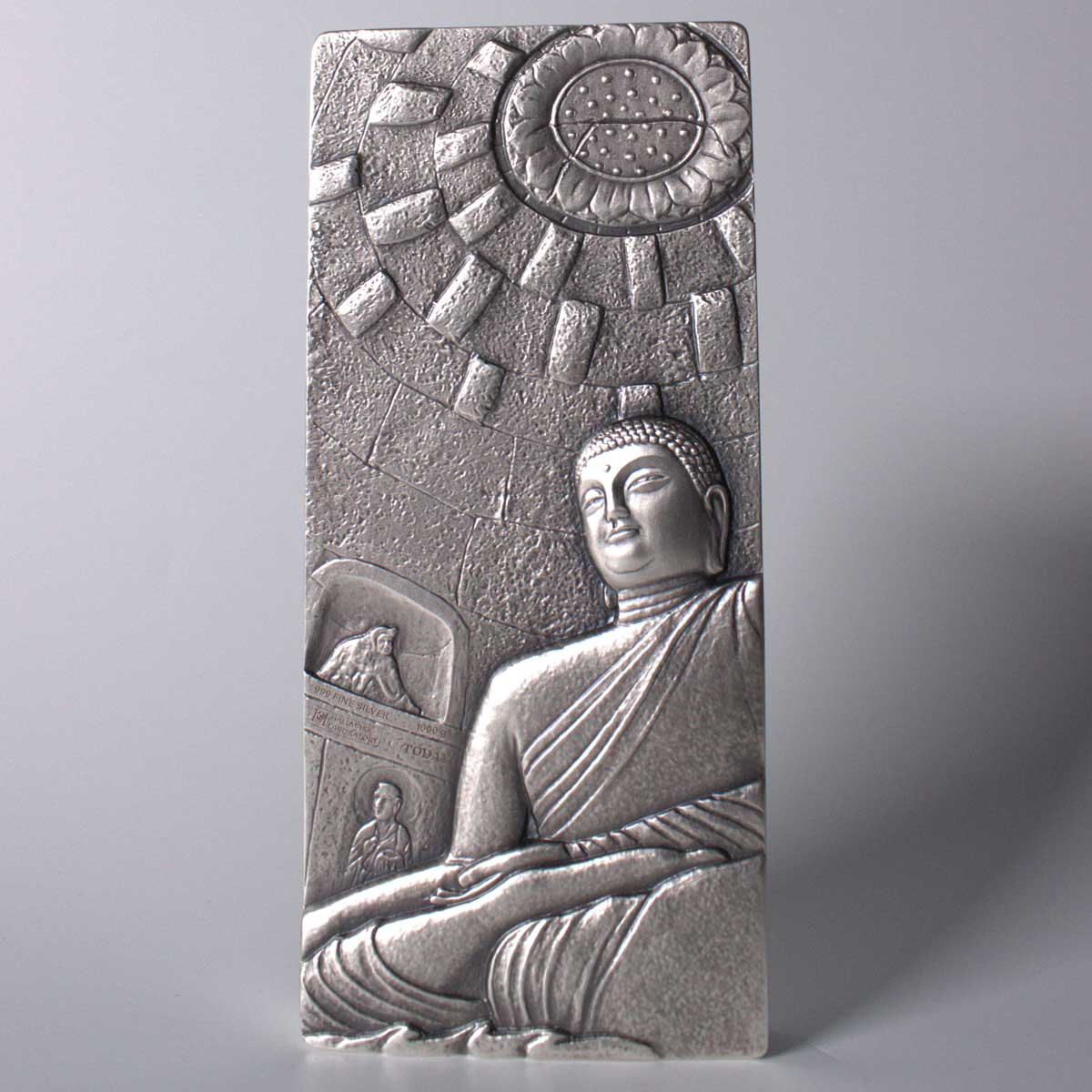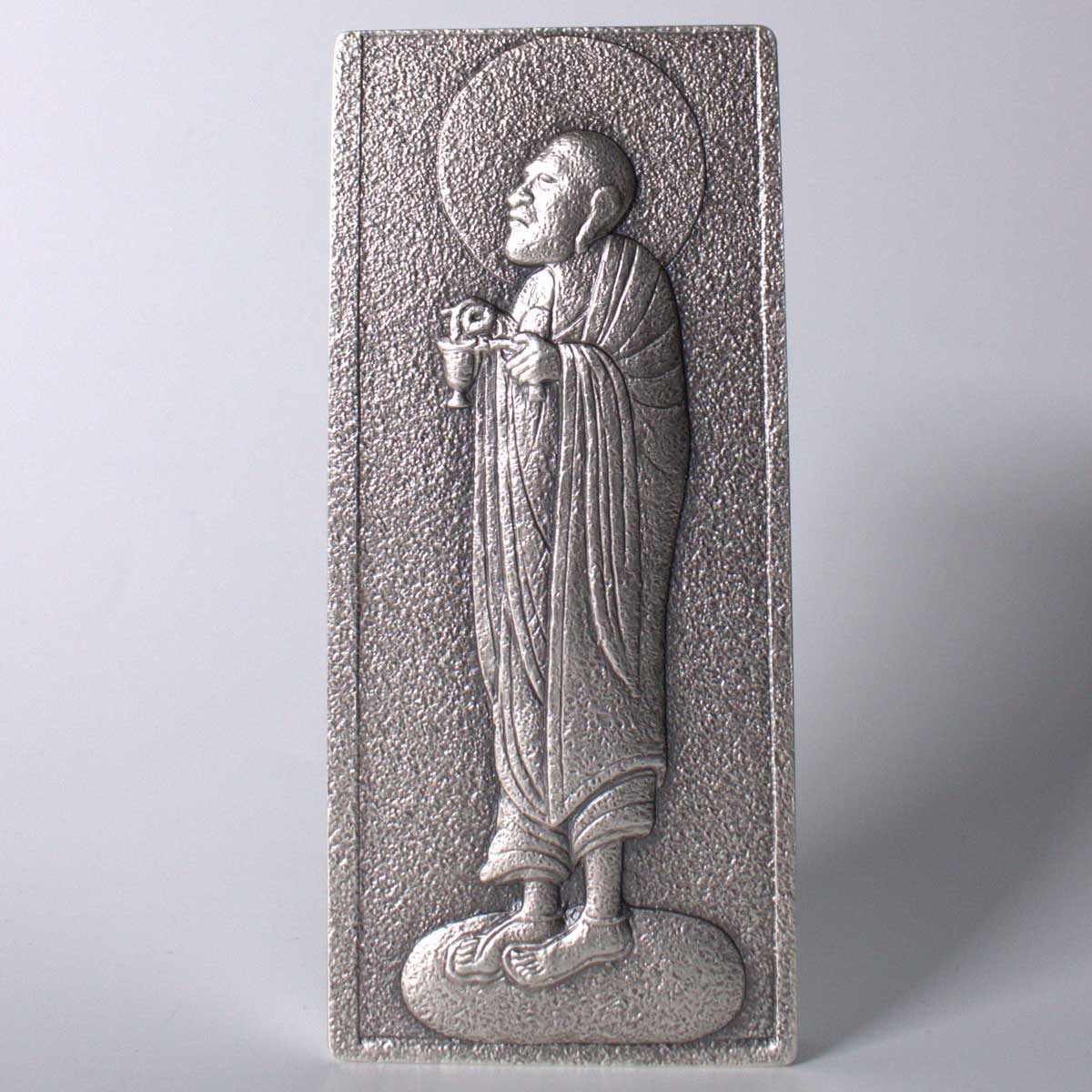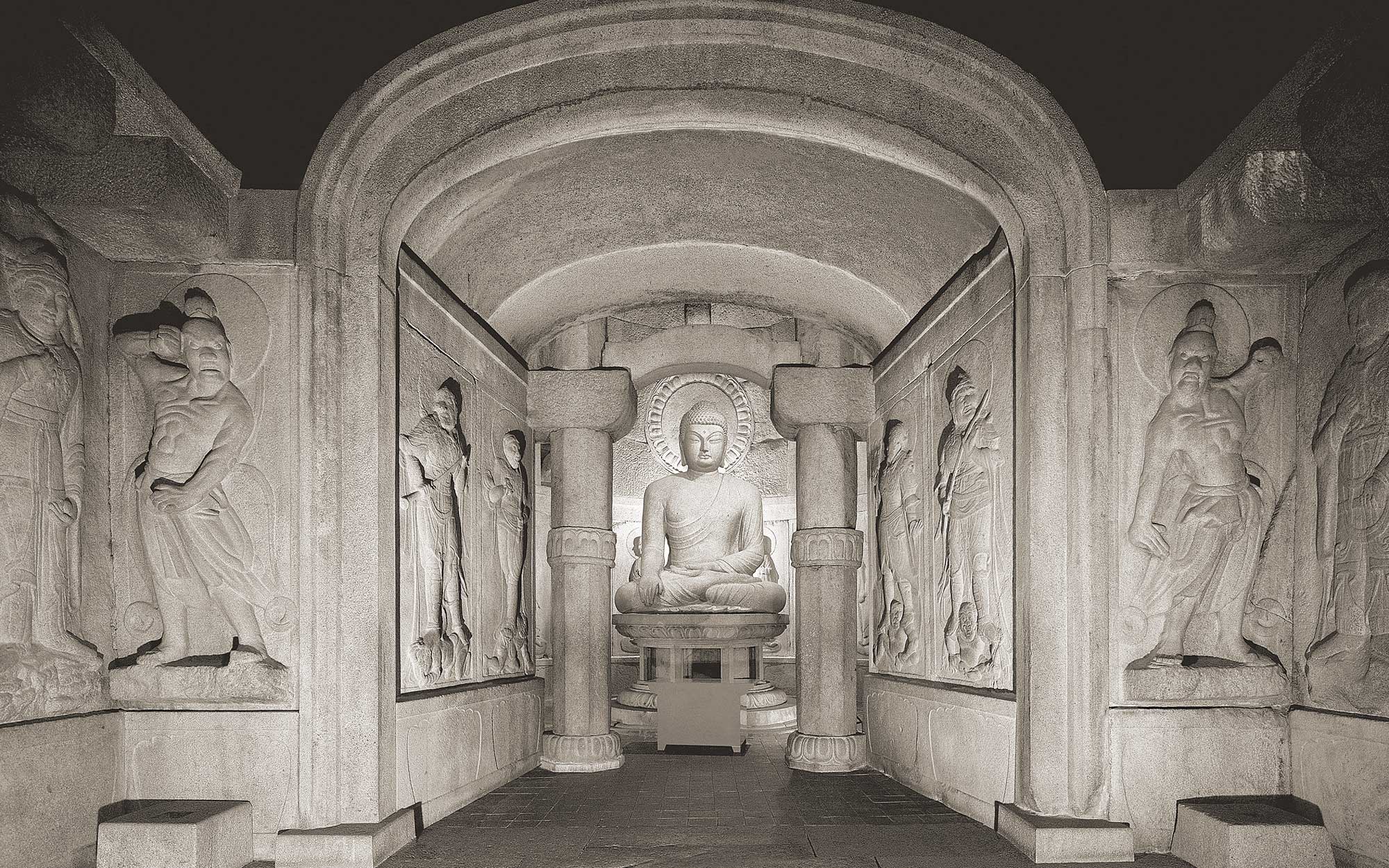The Buddhist statue in Seokguram Grotto provides inspiration for a limited mintage kilo silver bar
Purveyors of some of the finest silver bullion releases of the last decade, South Korean producer, Coin’s Today, also releases some fine numismatic issues as well. Best of all, their choice of subjects is often quite unique, and not covered on coins either very often, or ever before. Their latest features a Korean temple built in the eighth century, and located on the east coast of South Korea.
Coins Today have kindly provided some interesting backstory to the history of it, so we’ll concentrate on its transition to silver. The bar is struck in a full kilo of fine silver, so clearly relief is not going to be an issue, and there is good use of it on both faces. Rather than take a simplistic frontal view of the temple’s main attraction, there’s a more interesting low-perspective depiction, managing to show, not just the Buddha statue, but also the alcoves, and the ceiling detail as well. It’s a great example of choosing the right position to view something that we’re sure the photographers amongst our readers will appreciate.
The obverse side of this undenominated bar takes one of the many reliefs surrounding the statue on the rotunda walls, and reproduces it in full. It depicts one of ten disciples, and even includes a background textured like stone. You can see some of the other ones in place in the image lower down this article. All together, a fine encapsulation of one of South Korea’s greatest treasures. It should be available to order now, and with a mintage of just 108 pieces, we suspect that won’t be for long.
| DENOMINATION | COMPOSITION | DIMENSIONS | FINISH | MINTAGE |
| Undenominated | 1,000 grams of 0.999 silver | 60.0 x 135.0 x 11.7 mm | Antique | 108 |
THE SEOKGURAM GROTTO
The construction of Seokguram Grotto was begun in 751 under the leadership of Prime Minister Kim Dae-seong during the reign of King Gyeongdeok of the Silla Dynasty, and was completed in 774 (the 10th year of King Hyegong’s reign), whereupon it was given its original name of Seokbulsa Temple.
Buddhist art reached its peak during King Gyeongdeok’s reign, which spanned the middle period of the Silla Period, Besides Seokguram Grotto, many other cultural treasures were built during this period, including Bulguksa Temple, Dabotap Pagoda, the Three-story Stone Pagoda of Bulguksa Temple, and the Bell of Hwangnyongsa Temple.
The artificial stone grotto was built halfway down Tohamsan Mountain with pieces of white granite. The principal statue of Sakyamuni Buddha was placed at the centre of the grotto, and forty statues of various bodhisattvas, Buddha’s disciples, and guardian kings were carved on the surrounding walls, though only thirty-eight of them remain. The rectangular front chamber of the grotto is connected to the round main chamber by a corridor. The exquisite ceiling of the main chamber was made with more than 360 flat stones. The architectural technique used to build this grotto is unprecedented in its excellence.
There are statues of four guardian deities on both the left and right sides of the front chamber, which functions as the entrance to the main chamber. Carved on both sides of the entrance to the corridor is a statue of the Vajra Guardians, while the narrow corridor is decorated with the Four Guardian Kings carved in pairs. There is an octagonal stone column on both sides of the entrance to the round main chamber. The Principal Buddha is placed slightly off centre toward the back of the main chamber. From the entrance, the walls of the chamber are filled with the images of two devas, two bodhisattvas, and ten arhats. Standing behind the Principal Buddha is a statue of the Eleven-faced Avalokitesvara Bodhisattva, perhaps the most exquisitely carved statue found inside this grotto.
Every single sculpture contained in the grotto may be considered a masterpiece of East Asian Buddhist art. The list of masterpieces includes the principal image of Buddha, which was created with mature carving skills; the Eleven-faced Avalokitesvara Bodhisattva with its magnificently carved face and body; statues of valiant warriors and the majestic Four Guardian Kings; and the supple graceful statues of various bodhisattvas and arhats, each of which displays a distinctive individuality. In particular, the serene appearance of the Principal Buddha enshrined in the main chamber deepens the mystical atmosphere. The extremely natural appearance of the Principal Buddha seems to present to all living people the ideal model of a man harbouring a profound and sublime mind deep within him and easily pass to them his everlasting mercy. Seokguram Grotto is a masterpiece of the golden age of Buddhist art in Silla. What makes it stand out all the more is its perfect combination of architecture, mathematics, geometry, religion, and art. Seokguram Grotto has long been preserved as National Treasure No. 24, and was jointly registered as a UNESCO World Heritage in December 1995 along with Bulguksa Temple. (Thanks to Coin’s Today)






Leave A Comment